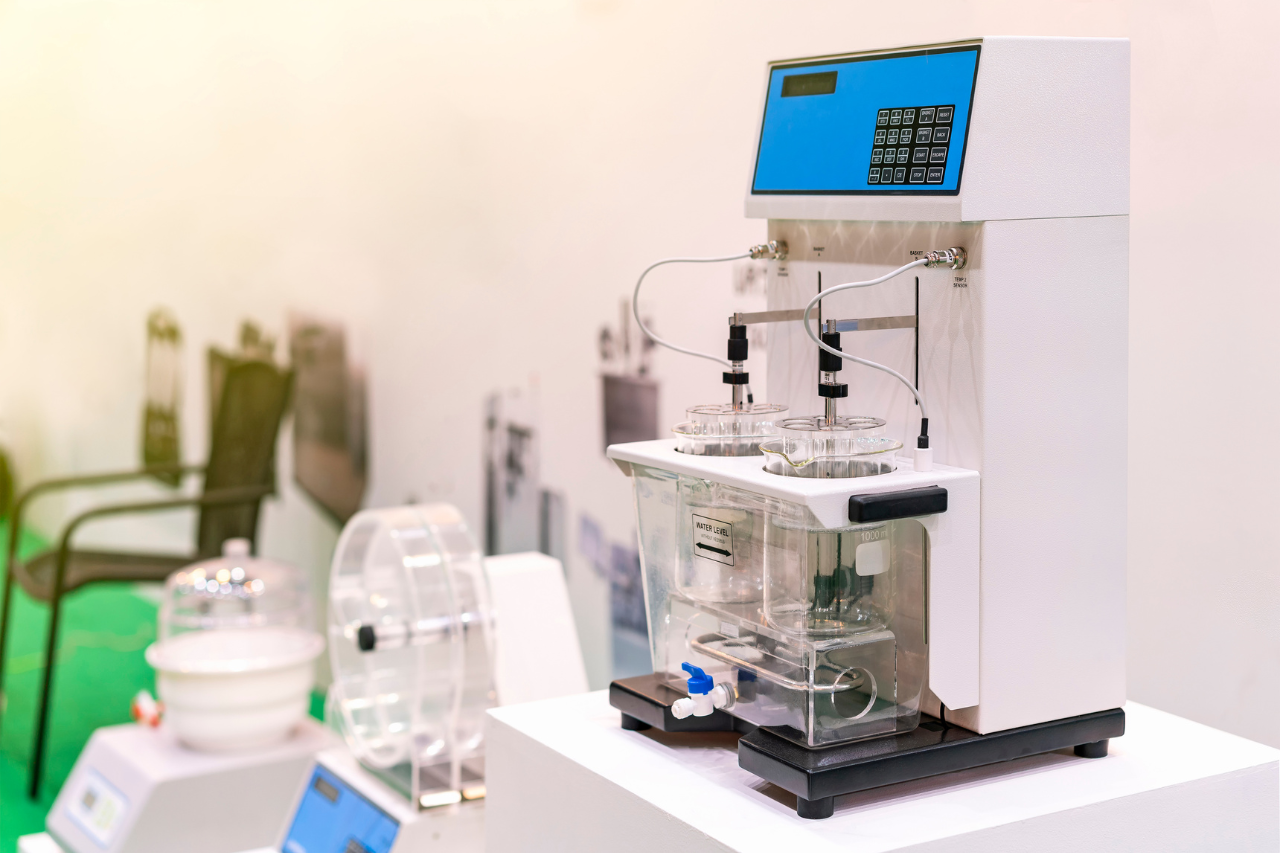Tablet disintegration testing is a crucial quality control procedure in the pharmaceutical industry. It ensures that tablets effectively break down into smaller particles for proper absorption in the body. However, like any laboratory test, disintegration testing can encounter various challenges that may affect the accuracy and reliability of results. In this article, we’ll explore some common issues encountered during tablet disintegration testing and provide practical solutions for addressing them.
Equipment Malfunction
Problem: Equipment malfunction, such as malfunctioning disintegration testers or temperature control issues, can lead to unreliable test results.
Solution:
- Regular Maintenance: Schedule routine maintenance and calibration of disintegration testers to ensure optimal performance.
- Temperature Control: Monitor and maintain consistent temperature conditions throughout the testing process to prevent deviations in results.
- Backup Equipment: Have backup equipment available in case of unexpected malfunctions to minimize downtime.
Inconsistent Results
Problem: Variability in disintegration times between replicate tests or different batches can occur due to factors like sample handling errors or environmental conditions.
Solution:
- Standardized Procedures: Implement standardized operating procedures for sample handling, testing parameters, and environmental conditions to reduce variability.
- Sample Homogeneity: Ensure uniformity in sample preparation to minimize variability between replicate tests.
- Statistical Analysis: Use statistical analysis techniques to identify and address sources of variability, such as outliers or systematic errors.
Sample Preparation Errors
Problem: Improper sample preparation, such as inadequate drying or incorrect tablet positioning, can impact test results.
Solution:
- Proper Drying: Thoroughly dry tablets before testing to prevent moisture-induced disintegration issues.
- Correct Tablet Positioning: Ensure tablets are positioned vertically and evenly spaced in the testing vessels to facilitate uniform disintegration.
- Standardized Procedures: Follow standardized procedures for sample preparation to minimize errors and inconsistencies.
Insufficient Disintegration Time
Problem: Tablets may fail to disintegrate within the specified testing duration, leading to inaccurate results.
Solution:
- Extended Testing Duration: Increase the testing duration as needed to ensure complete disintegration, especially for slow-dissolving formulations.
- Reformulation: Consider reformulating tablets with slower disintegration profiles to meet testing requirements.
Best Practices for Accurate and Reliable Results
- Quality Control Checks: Perform regular quality control checks on equipment and testing procedures to identify and address potential issues promptly.
- Training and Education: Provide comprehensive training for laboratory technicians and quality control managers on proper testing protocols and troubleshooting techniques.
- Documentation: Maintain detailed records of testing procedures, observations, and any deviations encountered during testing for traceability and accountability.
- Collaboration: Foster collaboration between laboratory staff, quality control managers, and other stakeholders to address challenges and implement best practices effectively.
Use Cases of Tablet Disintegration Testing
Tablet disintegration testing is a crucial quality control measure in the pharmaceutical industry. It has diverse applications across various stages of drug development, manufacturing, and regulatory compliance. This article explores some critical use cases of tablet disintegration testing, highlighting its importance and relevance in ensuring the quality and efficacy of oral dosage forms.
1.Formulation Development
- Optimization of Excipient Composition: Tablet disintegration testing helps pharmaceutical researchers assess the impact of different excipients on disintegration rates, facilitating the development of optimized formulations.
- Evaluation of Formulation Variants: Researchers use disintegration testing to compare the disintegration profiles of various formulation variants, such as immediate-release versus extended-release tablets, to determine the most suitable formulation for further development.
2.Manufacturing Quality Control
- Batch-to-Batch Consistency: Tablet disintegration testing is essential for monitoring the consistency of tablet manufacturing processes, ensuring that each batch meets predetermined quality standards.
- Detection of Manufacturing Defects: Disintegration testing helps identify manufacturing defects, such as inadequate compression or improper coating, which may affect tablet integrity and performance.
3.Regulatory Compliance
- Compliance with Pharmacopeial Standards: Regulatory agencies such as the United States Pharmacopeia (USP) and the European Pharmacopoeia (Ph. Eur.) mandate tablet disintegration testing as part of their official monographs for oral dosage forms.
- Validation of Product Quality: By conducting disintegration testing in accordance with regulatory requirements, pharmaceutical companies demonstrate the quality and integrity of their products, facilitating regulatory approval and market access.
4.Stability Testing
- Assessment of Product Shelf Life: Tablet disintegration testing is used to evaluate the stability of pharmaceutical products over time, providing insights into their shelf life and storage conditions.
- Detection of Degradation: Changes in disintegration times may indicate degradation of active ingredients or formulation-related stability issues, prompting further investigation and corrective action.
5.Post-Market Surveillance
- Monitoring of Product Performance: Pharmaceutical companies use disintegration testing as part of post-market surveillance efforts to monitor the performance of marketed products and ensure continued compliance with quality standards.
- Identification of Quality Issues: Any deviations in disintegration times observed during post-market testing may signal potential quality issues or batch variability, necessitating further investigation and corrective measures.
Conclusion
Tablet disintegration testing is a critical component of pharmaceutical quality control, ensuring that tablets meet regulatory standards for efficacy and safety. By understanding and addressing common issues encountered during disintegration testing, laboratory technicians and quality control managers can enhance the accuracy and reliability of test results. By implementing best practices, troubleshooting techniques, and maintaining rigorous quality control measures, pharmaceutical manufacturers can ensure the integrity and effectiveness of their tablet products, ultimately benefiting patients and healthcare providers alike.


